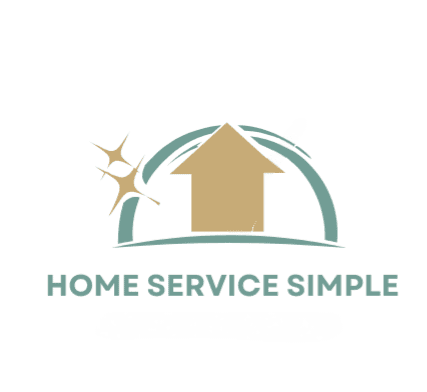Key Metrics for Running a Successful Carpet Cleaning Business in Wichita KS
Whether you’re just launching your carpet cleaning business in Wichita or looking to take your established operation to the next level, tracking—and acting on—the right metrics is non-negotiable. Below, we dive deep into the top performance indicators every local carpet cleaner should monitor, how to capture them, and real-world examples of adjustments you can make to drive growth.

1. Customer Acquisition Cost (CAC)
How to capture it:
- Track ad spend (Google Ads, Facebook, local flyers).
- Tie each campaign to a unique call-tracking number or landing-page URL.
- Use your CRM to log new customers by source.
2. Customer Lifetime Value (CLV)
How to capture it:
- Calculate your average ticket size (see metric #4).
- Pull repeat-purchase data from your scheduling software.
- Estimate how long customers stick with maintenance plans (e.g., 2 years).
3. Website & Lead Conversion Rate
How to capture it:
- Set up Google Analytics goals for form submissions and clicks on phone numbers.
- Use call-tracking software to record calls emerging from your site.
- A/B testing headline: “Wichita’s #1 Carpet Cleaning—Book Now & Save 15%!”
- Adding trust elements: BBB logo, Google reviews widget.
- Shortening your lead form to request only name, phone, and zip.
3. Website & Lead Conversion Rate
What it is:
Conversion Rate = (Leads / Website visitors) × 100%
Why it matters:
Your website is often the first impression of your carpet cleaning Wichita KS service. A low conversion rate means you’re leaking potential business.
How to capture it:
- Set up Google Analytics goals for form submissions and clicks on phone numbers.
- Use call-tracking software to record calls emerging from your site.
Example & adjustment:
If 5,000 people visit your site monthly but only 50 fill out the quote form (1% conversion), try:
- A/B testing headline: “Wichita’s #1 Carpet Cleaning—Book Now & Save 15%!”
- Adding trust elements: BBB logo, Google reviews widget.
- Shortening your lead form to request only name, phone, and zip.
4. Average Job Value (Ticket Size)
What it is:
Average revenue per booking.
Why it matters:
Increasing ticket size is often faster than finding new customers.
How to capture it:
- Pull monthly revenue ÷ total jobs from your accounting package (e.g., QuickBooks, HousecallPro, Jobber).
Example & adjustment:
If your ticket size is $175, upsell stain-protection treatments or upholstery cleaning. Offering a “Carpet + Stain Shield” bundle at $225 increases your average by 29%—without doubling your workload.
5. Repeat Business Rate
What it is:
Repeat Rate = (Number of returning customers ÷ Total customers) × 100%
Why it matters:
Repeat jobs cost less to service and often yield higher margins.
How to capture it:
- Tag returning vs. new customers in your CRM or scheduling app (Jobber, Housecall Pro).
- Report quarterly breakdowns.
Example & adjustment:
If only 20% of clients return, launch a “Spring & Fall Refresh” membership at $149/year with automatic reminders. Even a 10-point bump can add thousands in annual recurring revenue.
6. Technician Utilization Rate
What it is:
Utilization = (Billable hours ÷ Total available hours) × 100%
Why it matters:
Maximized utilization lowers per-job costs and increases profitability.
How to capture it:
Use time-tracking in your field-service app.
Example & adjustment:
If your crew bills 5 of 8 available hours/day (62%), fill gaps with short, same-day spot-removal tasks or customer follow-ups. Adjust your route planning to reduce travel time between jobs.
What it is:
ROI = (Revenue from campaign – Campaign cost) ÷ Campaign cost
Why it matters:
Measures effectiveness of each marketing dollar invested.
How to capture it:
- Assign unique promo codes or call-tracking numbers to each campaign. Platforms like callrail do an excellent job in helping track this.
- Attribute resulting revenue accordingly.
Example & adjustment:
A Facebook campaign costs $400 and generates $1,600 in booked jobs: ROI = (1600–400)/400 = 300%. Double down on similar targeting and creative.
8. Booking Lead Time & Capacity Utilization
What they are:
- Lead Time: Avg. days between customer request and appointment.
- Capacity Utilization: % of available slots booked.
Why they matter:
Minimize lead time to keep pipelines full and prevent booking bottlenecks. This usually isn't a problem for new companies struggling to fill their calendars. But for more established businesses bottlenecks in scheduling limits your top end growth. We'll address this in an upcoming blog post about how to resource plan for staff.
How to capture them:
- Track booking dates vs. service dates in your scheduler.
- Report weekly slot utilization.
Example & adjustment:
If average lead time is 7 days and capacity is only 60% during midweek, offer “Wednesday Specials” at off-peak rates to smooth your schedule and boost midweek revenues.
Tools & Solutions to Capture Your Metrics
- Google Analytics & Search Console for website conversions.
- Call-tracking platforms (CallRail, Ringba) for CAC and ROI.
- Field-service CRM (Jobber, Housecall Pro) for job values, utilization, repeat rates. Personally, we use Housecall Pro at Home Service Simple due to its many preconfigured reports and its fairly robust partner integrations.
To wrap it all up:
Monitoring these metrics transforms guesswork into precision action for your carpet cleaning business in Wichita KS. Start by setting up basic tracking in the next 7 days—pick one tool, capture one metric, and commit to a monthly review. In 90 days, you’ll see clearer trends and be ready to optimize your marketing, pricing, and operations for unstoppable growth. I should also add these metrics are relevant to all business. So, whether you're a window washing pro, pressure washing provider, or any skilled tradesman running your own business, these metrics are universal. I encourage you to leverage them to help keep your companies growing.
